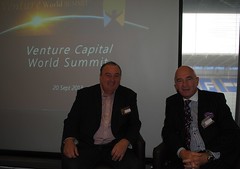Pitfalls To Avoid In Applying For A Venture Capital
Most entrepreneurs know what they have to do when searching for venture capital. But there also common mistakes that you have to avoid when presenting your business. An applicant can be rejected for a number of things.
Most venture capitalists are only required to approve a certain number of business plans they come across everyday. Your business must have a competitive edge over others that will get the attention of the investors.
You have prepared all of your legal documents and practiced your pitch a thousand times only to get rejected. At some point, you won’t even know why you got rejected. Don’t wonder if applicants get rejected over something trivial. To be able to increase your chances of getting approved you must know what to do and the common pitfalls to avoid when applying for a venture capital.
Do not want
Don’t be too technical. Investors pay more attention to number and figures because they understand them better. Although this may give the impression that you know your business like the back of your hand, the investors may not understand you. Your presentation should be able to communicate well with your audience.
Don’t give false hopes. Overly optimistic projections may ruin your credibility. Investors rely on credible financial projections not expectations. Unless your assumptions on future earnings are back up by credible sources, don’t mind bringing them up. It’s better to present realistic figures that can be achieved by the business.
Do not provide incomplete financial information. You must present both past and projected financial data. Historical financial information informs your investors what the company has accomplished and communicates future projections. You will need balance sheets, income and cash flow statements.
Sales are not the solution to all problems. Investors are looking for businesses that have potential for long term returns. Earning in small profits that can be collected in a timely basis proves a better survival strategy. Earning large amounts of profits while loosing money at the same time will ruin your business.
Concealing problems of the business is not a good idea. Investors also understand that all business has problems. State the whole story and inform them how you will manage and solve it in the future. Owing up to past and existing problems is better than hiding them. As long as you can present a solution your investors will understand.
Low price leverage. The low price strategy can only be achieved by one leader in an industry. It’s not a good sign to your investors if you are relying on a low price rather than the quality of your product or service. Wal-mart is one the few who can manage to capitalize on this strategy.
Overconfidence in your product is also not a good idea. Your idea maybe unique but you should always remember that the possibility of a competition will always be there. Every business profits from a need and any smart entrepreneur knows that. Your ideas may different but looking at the whole picture you may also be focusing on a need that others are also addressing.
State the facts in print. All entrepreneurs have a clear vision of what their business is but not all of them are good in putting them in print. It’s important to be the author of your own business plan than get outside help that may not be bale to capture your thoughts.


